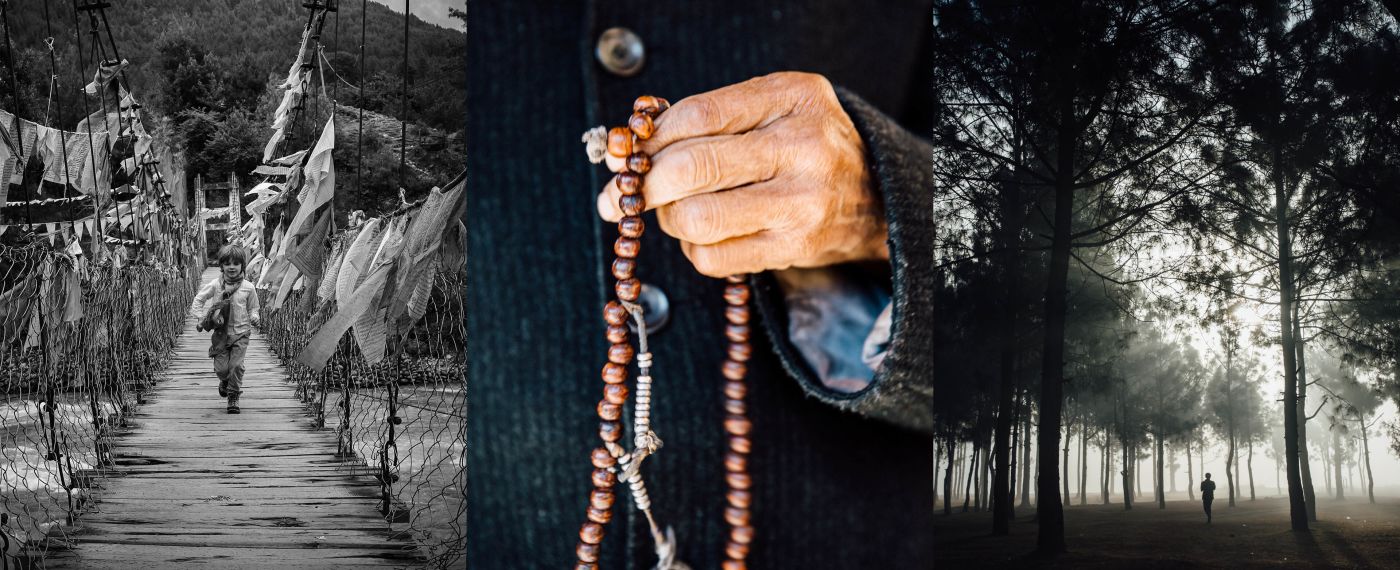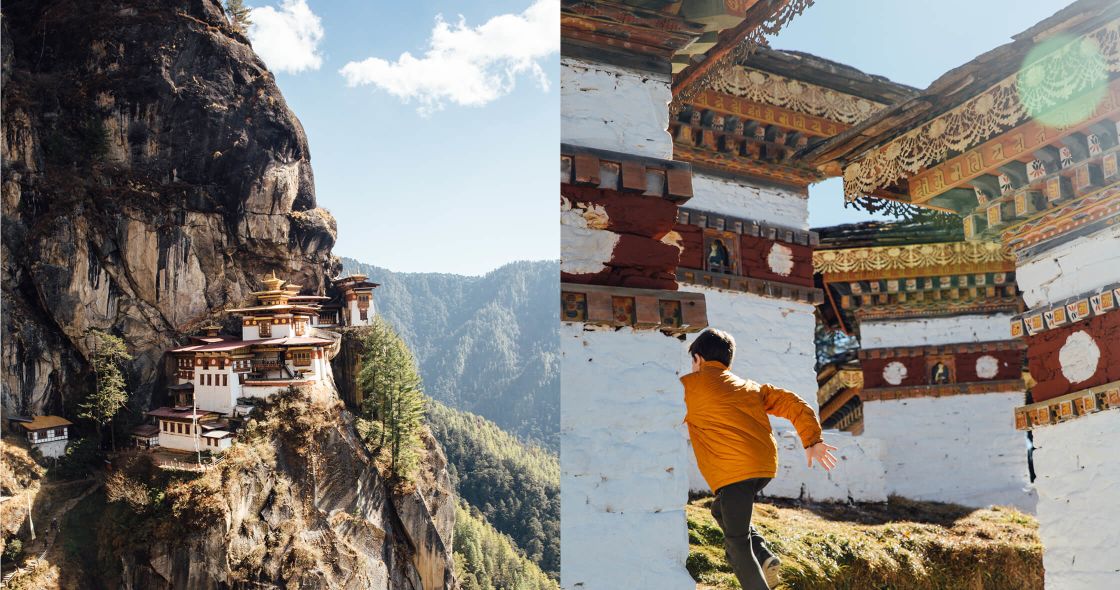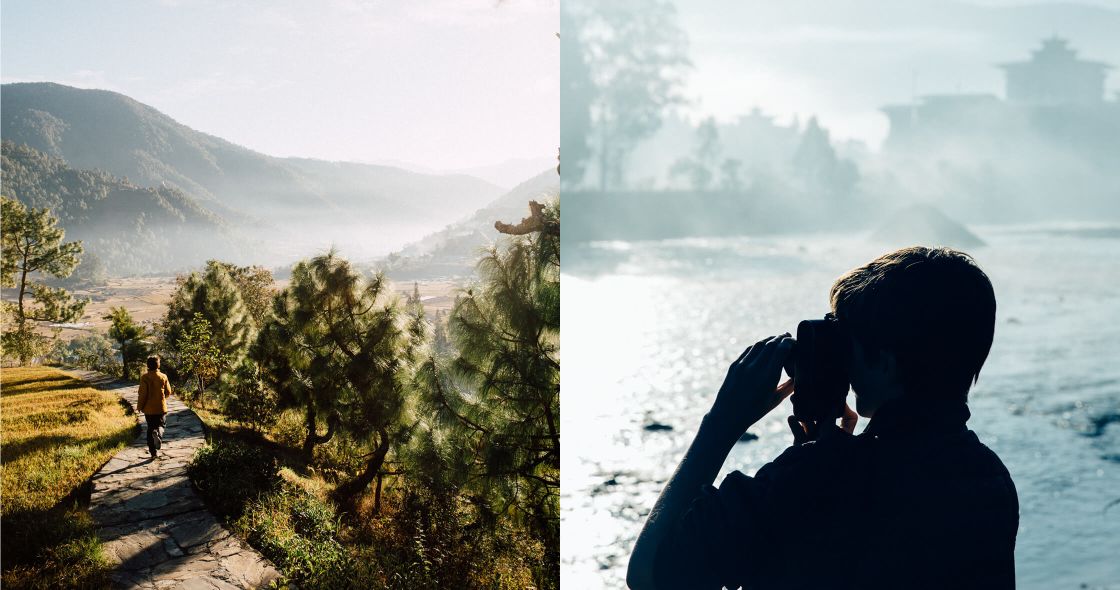

The balance of mind-body-spirit is something we’ve made our mantra at COMO Hotels and Resorts for 30 years. But what about the balance of material wealth and lived experience? Author and travel journalist Sophy Roberts argues that travel is the greatest gift — and celebrates a different kind of present, with a family trip in the Himalayas.
I remember the first time my husband and I made the decision to spend a holiday abroad with our two sons. We’d had a busy year of work; we’d been separated often because of conflicting demands on where each of us needed to be: him in London, me wherever the journalism took me. We were chasing bills, deadlines, and trying to bring up a family. We wanted to be together — somewhere natural and peaceful where we would get a proper break with our two young sons. So we flew to Kenya, and took a small bush plane to the island of Lamu on the Swahili coast. I remember feeling stressed about it. There was a strict limit on luggage. We could only carry 15kg each, which was mostly taken up by ‘baby gear’. We would not, therefore, have room for much else.
But that — strangely — was the opportunity: it brought a lightness, one free of materialism that has come to dominate the holidays

But it’s a trip to Bhutan that’s seared most deeply into our family’s collective memory. My older son, Danny, was 13, and my second child, Jack, was 10. My husband and I had hit the end of another year exhausted. We needed time out, and a little bit of magic, to transport us from our everyday reality. Escapism, yes, but of the best possible kind — into nature, which is the only place our phones go quiet, where we can lose ourselves to a different set of priorities. We booked a trip to Bhutan, giving us two nights at COMO Uma Punakha, and five at COMO Uma Paro.
You can ask me to recall the best presents I’ve been given. A pair of rollerskates in the late 1970s. An Etch-a-Sketch when I was about nine. But ask me to tell you about what we did on that holiday — ask any of us, in fact — and we’ll give you the blow-by-blow account, scene-by-scene, in a place that is far more than the sum of its parts.

Everything in Bhutan touches your senses: the early morning fog in the forest, the fluttering prayer flags on top of white-crested mountains, the time a stranger gives to conversation when you encounter each other on a narrow mountain pathway

When we hit a slipstream, rafting through the Mo Chu river, I can remember being terrified, and my youngest breaking into song (I got that on video) in sheer glee. I remember where we ended up, inside the heart of Punakha Dzong, and the rush of footsteps as scores of young monks flowed into the temple courtyard — a river of maroon robes. I remember every hike, and how it felt as if no-one but us was there. It was a tough walk to The Temple of the Floating Goddess, but not for my boys. They were so enamoured of the temple dog that followed at their heels, they gave our next puppy the same name.
The children were tired, but full of ambition to get a bigger glimpse of Tiger’s Nest, which by all logical accounts, should not exist — a gravity-defying construction built against a vertical slab of granite. The view has its metaphor in Buddhism, of course: the route is never easy, but the rewards are transcendental
On our penultimate day, we made the epic morning climb to the iconic Taktsang ‘Tiger’s Nest’ Monastery, perched 3,000 metres above the Paro Valley. It was here that Guru Rinpoche is said to have brought Buddhism to Bhutan from Tibet, flying on the back of a tigress. It was sensational. The smell of hot dust and butter lamps. The jangle of bells from the donkey carrying a Buddhist lama to the monastery in the clouds. The deep rumble of tightly-skinned drums and cymbals. Everything in Bhutan touches your senses: the early morning fog in the forest, the fluttering prayer flags on top of white-crested mountains, the time a stranger gives to conversation when you encounter each other on a narrow mountain pathway. But this journey to Tiger’s Nest was different, not least because it was the most challenging hike yet. The air became thinner, purer. The rhododendrons bloomed bright red, like spots of blood in a thick, green forest. The children were tired, but full of ambition to get a bigger glimpse of Tiger’s Nest, which by all logical accounts, should not exist — a gravity-defying construction built against a vertical slab of granite. The view has its metaphor in Buddhism, of course: the route is never easy, but the rewards are transcendental. That gets to the heart of what Bhutan is about — and why I’m glad we were together, and why I’m writing about it now. Bhutan is a place that sits outside the usual boundaries we put around what's possible, or even real, be it mythical flying tigers or physical challenges. It’s a place that in pushing you to explore, brings a family closer together in a materially distracting world. To me, there’s no finer gift.
COMO Hotels and Resorts offers a similar itinerary to the one written about here – seven-nights, including trekking, and a visit to Tiger’s Nest Monastery, staying four nights at COMO Uma Paro and three nights at COMO Uma Punakha. This itinerary combines spectacular drives, unique nature walks and fascinating monastery visits.






